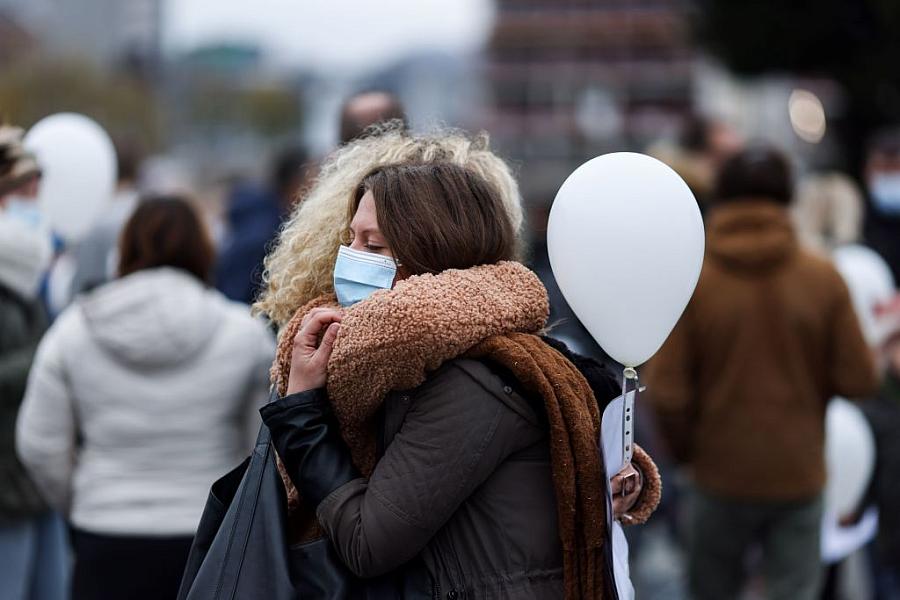Reporting on trauma is even harder when you’re processing your own grief

GettyImages
When I look back at the year I spent covering teen suicide in Colorado, there are many lessons I learned and challenges that our team overcame to publish what eventually became the “Crisis Point” project. The challenges ranged from difficulties in obtaining public records to building trust with the communities we cover.
But the biggest lesson I learned — and I am still learning — is how to report while processing my own grief and trauma. I have wanted to share my story for many months and even began writing a more intimate version of this blog post over the summer. I couldn’t finish it. My mind became blank half way through and I lost the words I wanted to say. You see, trauma can do that.
I hope to eventually write about my experience and grief, but for now I will share this: I am no stranger to trauma. I am well aware of the trauma journalists face daily in covering their communities. I also have a history of trauma related to losing loved ones over the years.
And what made reporting on “Crisis Point” even more challenging is that I am also a suicide loss survivor.
My experiences have motivated my reporting over the years, and since becoming the health reporter for The Denver Post, I’ve often found it to be healing. But this past year challenged me in new ways.
Now, we are experiencing a collective trauma from the pandemic. So, to help I would like to share what I have learned while reporting on a project that touched so deeply on my own grief and trauma.
1) Give yourself more time to finish tasks. Grief can make it much harder to carry out what are normally simple tasks and it’s easy to become overwhelmed. There are definitely things that slipped by me while working on “Crisis Point.” I also started the project with a very ambitious plan of doing more stories before our big publication but quickly became overwhelmed by the prospect. After talking to my editor, we decided to push some of our story ideas off until after the big rollout (which the pandemic then upended). I especially struggled with writing the stories in the project. As hard as I tried, somedays I just couldn’t find the words. Once during the editing phase, I stuck Post-its on a wall to help me visualize the organization of our main story on Colorado’s Safe2Tell youth tipline. Still, there was this barrier in my brain that blocked me from seeing the story in front of me. This challenge is something I still face today. For example, when “Crisis Point” published in September, I felt nothing. I was numb. (Not to mention, this blog post was due weeks ago.)
2) Surround yourself with supportive friends and, if possible, a supportive newsroom. I’m very fortunate to work in a newsroom with coworkers that are open to talking about mental health and who aren’t afraid to tell me when my expectations for myself during such times are too high. I also received support from my editors. They not only supported the project but when the unthinkable happened, they allowed me to make the decision to continue. That gave me a sense of control during a situation that was out of my control. They also gave me time to slip away for therapy sessions or to go home to rest when an interview with a grieving parent became too much. For all of this I’m very thankful.
3) Make sure you give yourself time to grieve and to process trauma. One thing that happened while reporting this project is that I often ended up placing other people’s grief ahead of my own. As a reporter, I felt this was what I needed to do. But as a person, it was difficult and complicated my grief further. I experienced dissociation because of the trauma from the loss. So by the time my grief caught up with me, it was overshadowed by my reporting. Often it was only during the car ride home from work that I acknowledged my loss. The pandemic eventually provided some relief by postponing the publication of the project and, in doing so, it gave me time to grieve without the weight of others’ trauma on my shoulders.
4) Seek professional help. Grief and trauma are powerful. It’s OK to ask for help. A mental health professional can validate what you are feeling and help you find ways to cope and heal.
5) Share only what you feel comfortable sharing. We started out the project by hosting community conversations so we could hear from those most impacted by teen suicide. In doing so, we were asking people to share with us some of the worst moments of their lives. Naturally, I felt that if I was asking people to open up then I should do the same with them. I shared my story, but really struggled with doing so because of the pushback we got for the project. The stigma around suicide and mental health was a challenge we faced with our reporting and it was even more difficult to experience as a suicide loss survivor. Under the advice of my therapist, I eventually settled on only revealing I was a suicide loss survivor during our conversations. In other situations, I revealed nothing unless I felt it would help a source to know about my experience.
I hope these tips help other journalists going through similar experiences, especially now that many of us are covering the pandemic and its impact.

